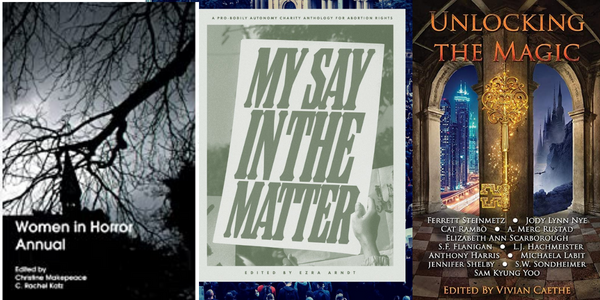Short And Not So Sweet
It’s not that I haven’t read a bunch the last few weeks; I actually have. It’s that, unfortunately, I’ve also DNFed several books. Big disappoint considering how many of them I was really looking forward to. I’ve also read some manga that was… fine, I guess but nothing I feel compelled to take the time to write up.
There is one book from the bunch, however, that I do want to share for those of you interested in the mid-60s art scene, Andy Warhol in particular, and/or the people with whom he surrounded himself:
Warhol’s Muses: The Artists, Misfits, and Superstars Destroyed by the Factory Fame Machine but Laurence Leamer (G.P Putnam’s Sons)
There is art I enjoy for its own sake and art I don’t care for until I learn more about the artist who created it. My interest in Warhol’s art is of the latter type. I can’t help but appreciate the genius of a guy who could convince people to pay tens, or even hundred, of thousands of dollars for paintings he never even touched or were in the medium of a porn star or fellow artist’s urine on copper-prepped canvases (https://www.warhol.org/lessons/oxidations-and-abstraction/) (my kids called these “the pee paintings” when they were younger and starting at very young ages found it uproariously funny that rich people would give someone money for them). I started my art career with blotted-line designs I learned how to do by watching a video at the Warhol Museum (https://www.warhol.org/lessons/andy-warhols-blotted-line/) and while I’m always working to improve my drawing and painting techniques, his “Art is anything you can get away with,” mentality has definitely encouraged me to experiment and play instead of always following the rules and dismissing my weirder ideas. Warhol was an out, gay man in a time when that wasn’t a safe thing to be. He made certain his mother was well-cared for. He could be kind to his friends. He helped Jean-Michel Basquiat gain noterietay - which Leamer claims was for purely Warhol’s own benefit, but I haven’t come across another source that makes that claim. At one point, being on the cover of Interview meant you had made it.
That said, when you’re learning about an artist, it’s important to dig deeper than surface platitudes. It’s important to know, as Warhol’s Muses lays out in detail, that while Warhol could be kind, he was certainly not a nice person. He wanted to become a cultural touchstone and did so not necessarily by virtue of his art (though I think Leamer does underplay Warhol’s work ethic considering how often the museum here rotates something I haven’t seen before into the collection and I go a lot), but by exploiting the scenes, hot, young, beautiful, rich things, along with their addictions and mental health disorders. He enjoyed, Leamer says, watching these young women, and young gay men, rise to the pinnacle of society, taking him along for the ride, and then watching them fall, even reportedly going so far as to say he wished he had been present to film one of them as he jumped out a window to his death. When he saw Edie Sedgwick and Nico in the throes of ever more serious addiction, not once did he try to intervene or get them help. He and the other denizens of the Factory mocked Valerie Solanas viciously and made her promises he had no intention of keeping despite it being clear that she had a serious psychiatric illness.
The promise that each of these people got in return for being treated thus was that Warhol would make them a star. That didn’t happen; we know most of their names but it’s in connection with Warhol and the Factory and their subsequent falls from social grace not because they became names in their own right. It is interesting to note that most of them outlived Warhol and several of them are still alive today. And that, among other things, leads to the question of art vs. artist and whether or not we should teach/learn about Warhol and support The Warhol Museum. I will tell you that the Museum itself presents a pretty balanced view of the man as you walk through - the film section is set a little bit apart but that’s because there are clips and stills with nudity and sex and maybe don’t take your five year old in there. The gift shop has copies of pretty much every book written about Warhol (I’ll check of this one next time I go) both positive and negative and books about and by his Muses and others who worked with him. The Warhol Foundation is, apparently, stingy with their resources (the Museum is pretty cool about letting researchers use the archives) but they support numerous LGBTQIA+ and BIPOC artists and organizations that take art into the community and to children and teenagers. They’re even sponsoring a mural and garden project in the neighborhood around the Museum which, ironically, has been a blank, impersonal little nook near the football and baseball stadiums.
In all, I think this is a really fascinating book that brings into the open not only the dirty underbelly of Warhol’s Factory, but also the 60s creative scene in general. It would be naive to think that his studio is the only place where such things were happening - remember, Capote had his own little cadre of ladies (btw he and Warhol apparently hated each other) — and I think it’s important to understand that while this was a time of intense creativity, it was also horribly ugly, especially for women and gay men. It’s also helpful in understanding how the counter culture movement turned violent and the beginning of a primer to help us understand how we may have to resist going forward.
Warhol’s Muses: https://bookshop.org/a/56337/9780593716663
